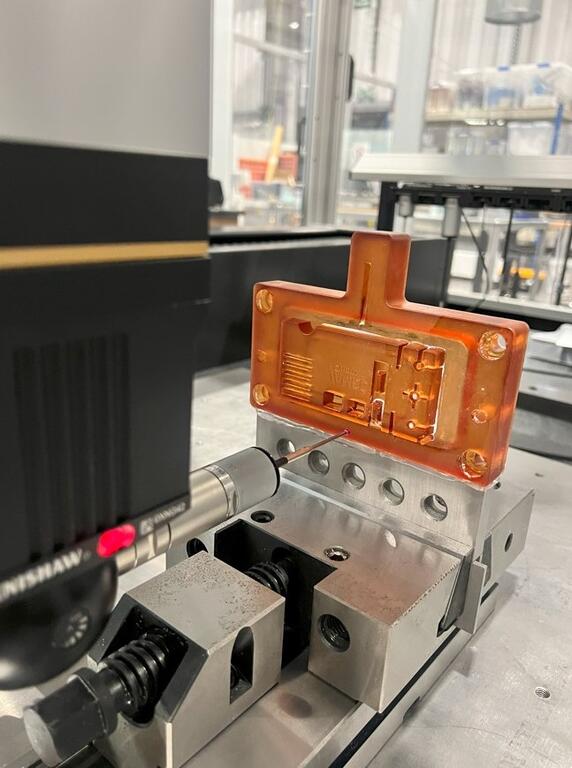3D-printed tooling pathway reduces injection moulding costs and lead times
Challenge
Design and develop a 3D-printed polymer mould for use in injection moulding and experimenting with different techniques to evolve in-house expertise for future application.
Background
The MiniMould project was established to look at the issues with 3D-printed mould tools and to address the broader initiative to prove viability of 3D-printed moulds for the manufacturing industry, specifically injection moulding.
The two-month project, backed by almost £30k of funding from the Internal Capability Project (ICP) 2025 programme, originated from two previous proto production moulding projects with Wrexham-based plastic component manufacturer Fibrax, to design an injection mould for use at the AMRC Cymru, in North Wales.
The primary challenge was the significant geometric deviation, or warping, in a 3D-printed polymer mould created during a previous proto production moulding project. This warping, occurring during the printing, cleaning and curing stages, made the mould unsuitable for its intended use in injection moulding.
The goal for the engineers was to understand the root causes of these inaccuracies and, through an experimental process, develop the in-house expertise needed to design and manufacture a functional 3D-printed mould.
Innovation
The team adopted an iterative development approach, beginning with in-depth research into methods for minimising warping in resin 3D prints. This enabled the team to devise a structured action plan, which included the measurement of the initial mould iteration reference mould (RM0), establish a baseline for warping and process refinement, which involved a more thorough cleaning protocol before curing - and yielded a measurable improvement in flatness.
Recognising the inherent brittleness of the resin, the project pivoted to a different additive manufacturing technology, Selective Laser Sintering (SLS), using Nylon 11, a material with significantly higher elongation, which aimed to allow the part to deform underload, to wash the stress throughout the body instead of localising it.
Subsequent iterations experimented with simplified geometry, reduced wall thicknesses and altered flow channels to optimise performance and minimise warping.
A close-up of a Renishaw touch-trigger probe acquiring coordinate data from the internal features of the 3D printed, polymer mould tool. This metrology process is used to capture the mould geometry and see if it conforms to its design specifications.
Result
Engineers at the AMRC Cymru successfully produced a moulded plastic part using an SLS 3D-printed mould, achieving its main objective.
Throughout the iterative process, the team gained critical knowledge about the practicalities of using 3D-printed tooling.
A key finding was that while the initial SLS mould exhibited a 120% change of flatness of the front and back face than the resin version, its superior toughness and elongation allowed it to better withstand clamping forces suited for injection moulding.
The investigation revealed that reducing wall thickness from 7.5mm to 3mm to combat warping had a trade-off, ultimately causing the mould to fail under load.
It was also found that the polypropylene material bonded to the SLS mould surface, indicating a need for release agents, and that simplifying part geometry was crucial for successful moulding.
Impact
The project has demonstrated the viability of producing injection moulded components using 3D-printed tooling, building valuable in-house expertise in the process.
For industry, this work highlights a pathway to significantly reduce the lead times and costs associated with producing tooling for prototypes and low-volume manufacturing runs.
The findings provide a practical insight on material selection - balancing thermal properties with mechanical toughness - and design for the additive manufacturing principles needed to overcome challenges like warping and mould failure.
Future work could explore hybrid material moulds, protective metal plating and optimised cooling strategies to further bridge the gap between rapid prototyping and mass production tooling.


